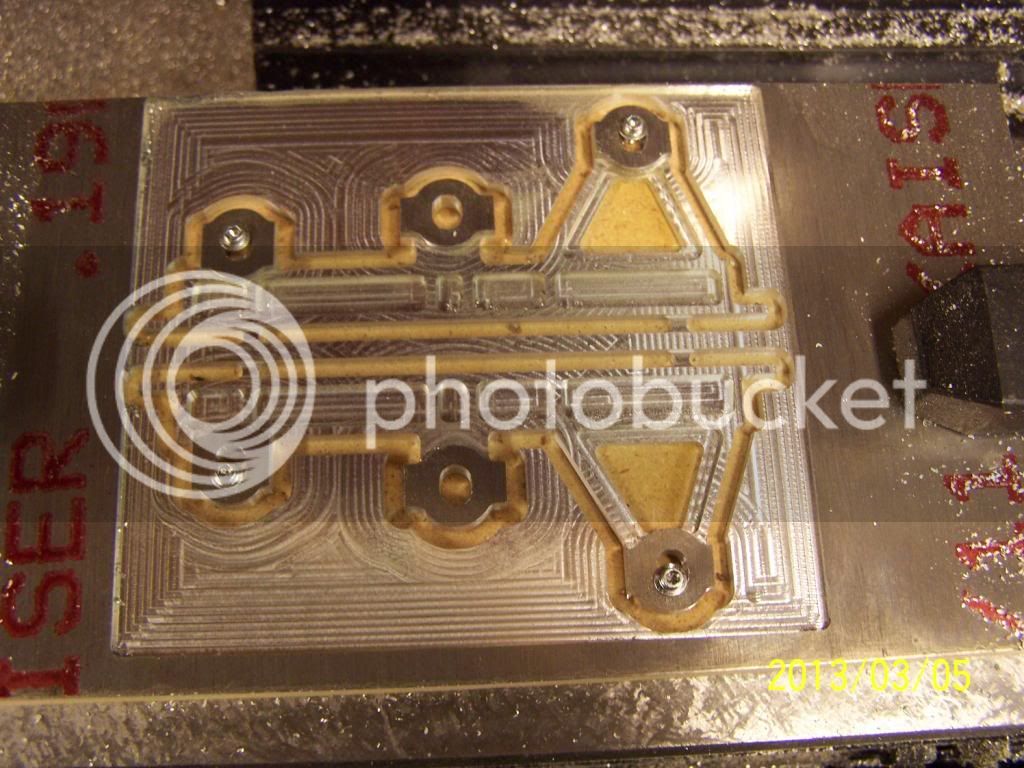Hi all!
I've been hovering around here for a long time, but I think I'm finally ready to start BUILDING something. I have a small amount of engineering background, but no real machining experience. So why not start with something easy like the Bernay!? Actually, the individual pieces don't look too difficult and I have already started with some of the simple pieces like the valve linkage. Now to the question:
Actually, the individual pieces don't look too difficult and I have already started with some of the simple pieces like the valve linkage. Now to the question:
How do you normally hold material when you are cutting an external profile such as the valve links?
The way I have been cutting them is by facing to the proper thickness, drilling the through-holes, machining a fixuture to fit, then bolting the piece down using the internal holes. This works very well, but it leads to making a fixture for nearly every part. I don't mind doing that, but is there a more efficient method? What about on larger pieces?
If it makes any difference, I am using a benchtop Prolight 1000 mill. I have a pretty decent 4" vise and the typical T-Slot hold-downs, but not a lot else. If there is something else I should be looking for, I am always open to shopping for new tools! :-D
Thanks in advance for sharing your wisdom!
Jason
I've been hovering around here for a long time, but I think I'm finally ready to start BUILDING something. I have a small amount of engineering background, but no real machining experience. So why not start with something easy like the Bernay!?
How do you normally hold material when you are cutting an external profile such as the valve links?
The way I have been cutting them is by facing to the proper thickness, drilling the through-holes, machining a fixuture to fit, then bolting the piece down using the internal holes. This works very well, but it leads to making a fixture for nearly every part. I don't mind doing that, but is there a more efficient method? What about on larger pieces?
If it makes any difference, I am using a benchtop Prolight 1000 mill. I have a pretty decent 4" vise and the typical T-Slot hold-downs, but not a lot else. If there is something else I should be looking for, I am always open to shopping for new tools! :-D
Thanks in advance for sharing your wisdom!
Jason







